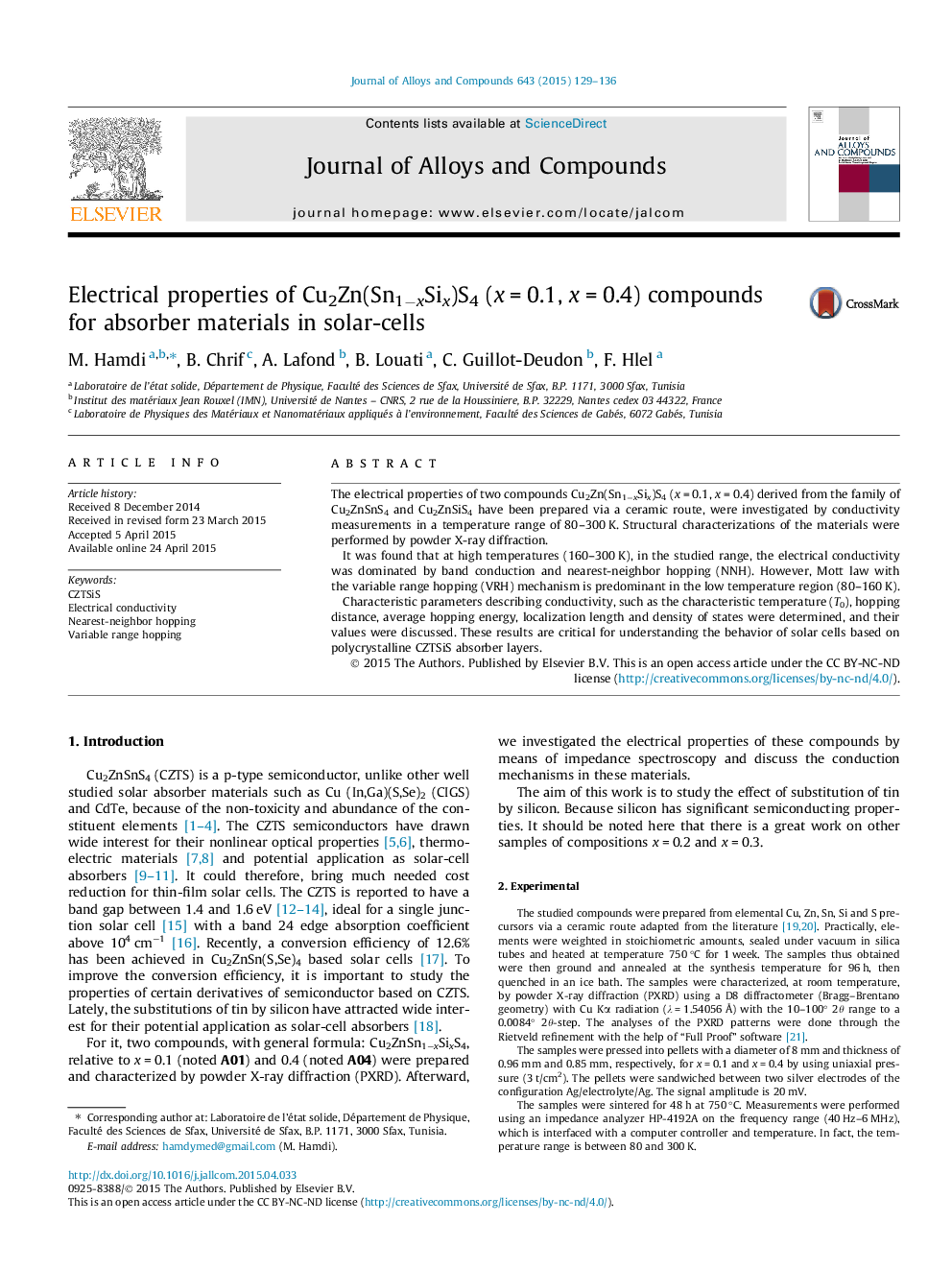| Article ID | Journal | Published Year | Pages | File Type |
|---|---|---|---|---|
| 1608828 | Journal of Alloys and Compounds | 2015 | 8 Pages |
•An equivalent circuit model is proposed for both compounds.•The electrical conductivities are dominated by band conduction and NNH.•The conductivities are dominated by “variable range hopping” mechanism.•In both materials, the ac conductivity is dominated by CBH and NSPT mechanisms.
The electrical properties of two compounds Cu2Zn(Sn1−xSix)S4 (x = 0.1, x = 0.4) derived from the family of Cu2ZnSnS4 and Cu2ZnSiS4 have been prepared via a ceramic route, were investigated by conductivity measurements in a temperature range of 80–300 K. Structural characterizations of the materials were performed by powder X-ray diffraction.It was found that at high temperatures (160–300 K), in the studied range, the electrical conductivity was dominated by band conduction and nearest-neighbor hopping (NNH). However, Mott law with the variable range hopping (VRH) mechanism is predominant in the low temperature region (80–160 K).Characteristic parameters describing conductivity, such as the characteristic temperature (T0), hopping distance, average hopping energy, localization length and density of states were determined, and their values were discussed. These results are critical for understanding the behavior of solar cells based on polycrystalline CZTSiS absorber layers.
Graphical abstractFrequency dependence of Z′ and Z″ and equivalent circuit model.Figure optionsDownload full-size imageDownload as PowerPoint slide
